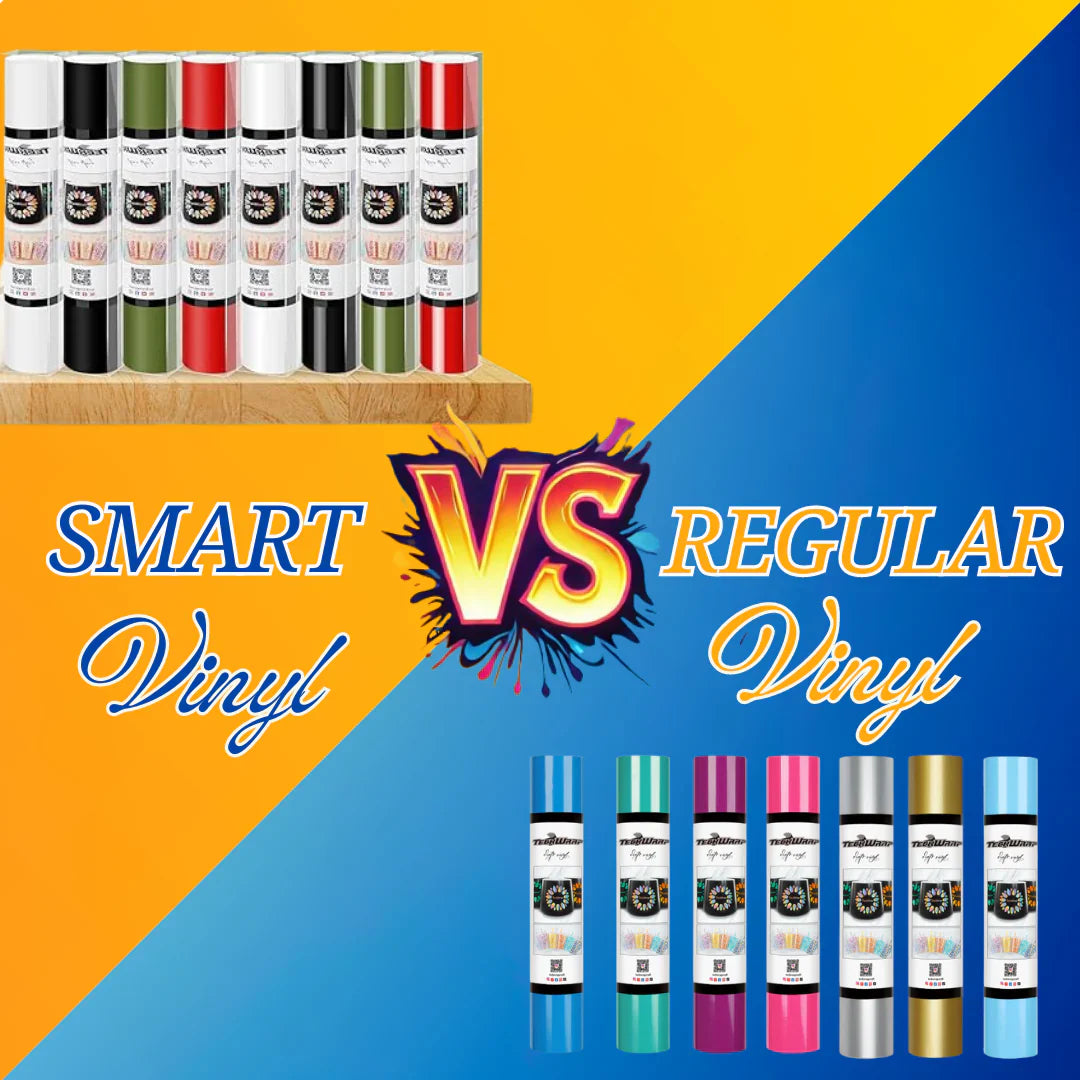Posted By TeckWrap Craft On February 22, 2023
How To Put A Picture On A Shirt: DIY Custom-Printed Shirts

Table Of Contents
- Different Methods Of Putting A Picture On Shirts
- 1: Screen Print
- 2: Direct to Garment Printing (DTG)
- 3: Heat Transfer Vinyl (HTV)
- 4: Sublimation Printing
- 5: Heat Transfer Paper
- Using Transfer Paper for T-Shirt Design Printing
- Care Instructions for Fabrics With Heat Transferred Image
- Factors To Consider In Putting Pictures On A T-Shirt
- Frequently Asked Questions
You’ve always wanted to wear a shirt with your favorite picture printed on it. But you want to do it yourself and not bring it to a T-shirt printing shop. Not only is it a fun activity to do, but it can also save you a lot of money when you do it instead.
You can create your custom shirts with the help of TeckWrap Craft. With iron-on transfers such as the TeckWrap Craft Inkjet Heat Transfer Paper, you can create various T-shirt designs to your heart's content. This article will give you more details about how to put a picture on a shirt (procedure and tips) and other factors to consider when printing pictures on a T-shirt. If you are excited to know more, keep on reading!

Different Methods Of Putting A Picture On Shirts
There are several printing methods to transfer images onto garments, such as screen printing, heat transfer vinyl, sublimation printing, and much more. Transferring pictures through transfer paper and printer is a traditional way of creating a printed T-shirt.

You may need special equipment or tools to be able to transfer pictures on shirts. You may need a printer, cutting machine, iron or heat press, and other specialized equipment.
1: Screen Print
Screen printing is an excellent method of transferring designs on fabrics. It is best for bulk projects. Here’s how you can put a picture on a shirt through screen printing:
Step 1: Gather The Tools
- Mesh screen
- Stencil
- Special Inks.
- Light-reactive emulsion.
- Acetate Film
- UV light source
Step 2: Prepare Your Design and the Mesh Screen
- Prepare the design digitally and print it on the acetate film.
- Next, coat the mesh screen with a light-reactive emulsion. Place the acetate film over the screen.
Step 3: Exposing the Screen to Light
- To harden parts of the emulsion not covered with the design, expose the mesh screen to a UV light source.
- This creates a stencil, as the emulsion is washed away from the areas where the ink will pass through.
Step 4: Apply Ink
- Let the screen dry completely then position the stencil on your T-shirt.
- Pull the ink across the screen using a squeegee, pressing it through the open areas onto the shirt below.
Step 5: Allow the Screen Print Design to Cure
- Once you have completely covered the screen with ink, slowly lift it and let the ink dry on the T-shirt.
- The ink must be cured to ensure it adheres permanently to the material. Curing can be done by heat-setting or using UV light, depending on the type of ink used.
2: Direct To Garment Printing (DTG)
DTG involves printing designs directly onto fabric using specialized inkjet technology. Following is the method of DTG printing on a cotton shirt:
Step 1: Tools Required for DTG Printing
- A special DTG printer.
- A spray gun.
- Curing oven.
Step 2: Shirt Preparation
- The shirt you are putting the picture on will be pre-treated with a special solution. This primer helps the ink adhere to the fabric and improves the vibrancy of colors.
- The fabric is then heat-pressed to dry the solution.
Step 3: Print the Picture on the Shirt
- Create or upload the image on the computer and save it in a high-resolution format.
- Load the shirt into the DTG printer so that it can print your design on it directly.
Step 4: Cure the Shirt
- Once printed, the garment is heat-cured in the oven to set the ink.
- You can even use a heat press for this. This makes the design durable, wash-resistant, and vibrant.
3: Heat Transfer Vinyl (HTV)
Using heat transfer vinyl or HTV is another popular method of putting pictures on a shirt. HTV is a special type of vinyl designed for fabrics with a heat-activated adhesive backing. This is how you use it to design a shirt:
Step 1: Materials Needed
- Heat Transfer Vinyl.
- Cutting machine.
- Weeding Tool.
- Heat press.
- Parchment paper.
Step 2: Prepare the Design
- Finalize the design in the software that comes with the cutting machine.
- Set its dimensions and mirror it.
Step 3: Cut and Weed the Vinyl
- Load the vinyl in the cutting machine and allow it to cut.
- Using a weeding tool, remove negative vinyl from the design.
Step 4: Transfer the Design on the Shirt
- Place the design on the shirt and put parchment paper on it.
- Apply heat to it in a heat press according to the recommended temperature, pressure, and time settings.
- When the time is up, allow the design to cool down then slowly remove the carrier sheet. That’s it.
4: Sublimation Printing
Sublimation printing is an excellent way to transfer a picture to a shirt. The print is durable and long-lasting. It works best on polyester and poly-coated fabrics. Here's the process:
Step 1: Get the Tools
- Sublimation sheet.
- Sublimation printer.
- Heat press.
- Butcher paper
Step 2: Print the Design
- Choose any picture that you want to put on your shirt and set its dimensions.
- Print it on the sublimation paper using the special printer.
Step 3: Apply Heat to Transfer the Design
- Place the design on the shirt and put parchment paper on it.
- Apply heat to it in a heat press according to the recommended temperature, pressure, and time settings.
- When the time is up, allow the design to cool down then slowly remove the carrier sheet. That’s it.
5: Heat Transfer Paper
Using heat transfer paper is another method of printing a picture on a shirt. There are two types of heat transfer papers: light and dark. The one you will use depends on the color of the fabric you are designing. The method is stated below:
Step 1: Tools Required
- Inkjet Printer.
- Inkjet Heat Transfer Paper.
- Heat press.
- Butcher paper.
Step 2: Prepare the Picture
- Set the dimensions of your design in the software and mirror it.
- Print it on heat transfer paper using an inkjet printer.
Step 3: Transfer the Image on the Shirt
- Place the printed paper on the shirt with the design facing down.
- Apply heat to it using the specified temperature and time settings.
- Remove the butcher paper and you have successfully put a picture on your shirt.

Using Transfer Paper For T-Shirt Design Printing
Transferring pictures from paper to T-shirt can be done using the simplest method of using iron on transfers. This method is very popular and only requires an inkjet printer for your transfer paper.
Before you begin crafting using transfer paper, it is advisable that you read more about it and how it is best applied to fabrics or garments. You don’t have to go to different shops selling specialty paper or printer paper, or even scout the internet to find the best transfer paper.
TeckWrap Craft’s Inkjet heat transfer paper is made of quality material that can produce excellent transfers. Heat transfer paper is made of polymer or coated with wax and pigment, allowing any design printed on it to adhere to garments such as T-shirts, bags, towels, socks, pillowcases, and so on. The design created by transfer paper lasts for 20 to 30 wash cycles if the garment is properly taken care of.
The best thing about using heat transfer paper is the fact that you don’t need expensive equipment to create a transferred image onto fabrics. You simply need an inkjet printer, transfer paper, pair of scissors or a cutting machine, and a heat press or iron.
You must be aware that there are two types of heat transfer papers. You should know when it is best to use each one to be able to produce quality transfers.
You can read more about transfer papers in this transfer paper guide. The two types of heat transfer papers are Light Heat Transfer Paper and Dark Heat Transfer Paper.
Light Colored Shirts
When you choose white or light-colored shirts for your transfer, you must use TeckWrap Craft’s Light Fabrics Heat Transfer Paper pack. When using light transfer paper, always set your photo editing software to mirror image.
Avoid using light transfer paper on black or dark-colored shirts, for your transferred image may look opaque. Light-colored transfer papers are generally thin and transparent.

Dark Colored Shirts
For dark-colored shirts, dark transfer paper is used. TeckWrap Craft’s Dark Fabrics Heat Transfer Paper pack is an excellent choice for your transfers on black or dark-colored shirts. You may use dark heat transfer paper on all your transfers, even on light-colored shirts. It is possible. However, this may not be the most economical choice for dark heat transfer paper as it is more expensive than light heat transfer paper. Mirroring the image is not necessary for dark heat transfers.

A pack of TeckWrap Craft heat transfer paper contains 15 pieces of A4-size transfer sheets, two parchment papers, and an instruction sheet. Each sheet of transfer paper has a printable side (white side) and the grid side. Use the printable side to print your picture.
Care Instructions For Fabrics With Heat Transferred Image
You have successfully transferred the picture to your T-shirt! But, it doesn’t stop there. You want to keep the image to last longer so you can use the T-shirt longer as well. There are a few important instructions on how you can care for your shirts that you must follow.
First, let the image sit for at least 24 hours after the image transfer on the shirt. After which, you may wash it. It is recommended to wash your shirt by hand.

Washing your shirt using a washing machine or tumble drying is not advisable. Avoid applying bleach to your shirt and wringing it. As much as possible, do not expose your shirt directly under the heat of the sun. Also, be mindful not to directly iron the transferred image.
Factors To Consider In Putting Pictures On A T-Shirt
1: Choosing Quality Transfer Paper
If you use quality transfer paper, you can also expect quality transfer. It is advantageous to get high-quality and durable transfer paper for printing. Quality transfers are elastic, have vibrant colors, are not prone to cracking or peeling, can withstand constant washing, and are less prone to color fading.
2: Using High Resolution Images
Pictures you can download online oftentimes have low resolutions (approximately 72 ppi). Even if the image looks fantastic, you must avoid using it for your T-shirt printing because it will not look good when printed.
You should always use high-resolution images (at least 200 ppi) for T-shirt printing. If you have the raw file of the image, the better because this file is the largest format that you can get. Pictures with higher resolutions are easier to edit and resize.
When using digital images for your shirts, the transfer output should follow the what you see is what you get principle. Your transferred image on the shirt should look exactly the same as what you see in your computer program.
It is easy to convert the image you will use for your transfer using Photoshop. With Photoshop, you can convert the picture from RGB to CMYK. You can easily adjust the picture's settings when the picture is in CMYK color mode.
Also, you can crop and resize your picture in Photoshop. Leave enough white space around the picture when cropping. Resizing your picture helps you choose how big or small the picture will be.
3: T-Shirt Color
First-time crafters may not see how crucial it is to take into consideration the color of the shirt that you will use for your transfer. The color of the shirt will determine the quality and the color contrast of the picture on the shirt.
If you want to print on a dark-colored shirt, it is best to use light-colored images, so the colors are highlighted. Conversely, use dark-colored images on light-colored shirts to emphasize the vibrant colors.
Frequently Asked Questions
Conclusion
Printing your own design and transferring it to a shirt or garment is a worthwhile project. It may take some time to perfect, but with practice, you can surely improve and achieve the desired outcomes. Use quality materials for your transfers. TeckWrap Craft is making your crafting journey so much easier by offering your tons of vinyl design and printable paper. Visit TeckWrap Craft to get the latest updates and the best deals!






